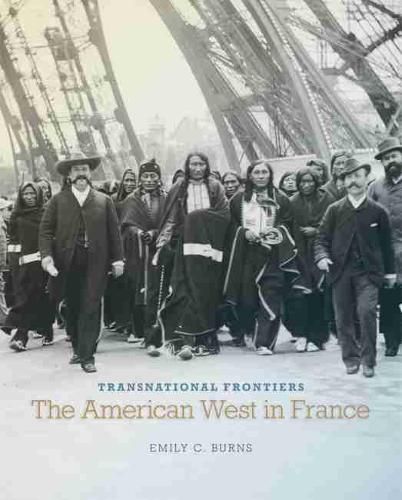Readings Newsletter
Become a Readings Member to make your shopping experience even easier.
Sign in or sign up for free!
You’re not far away from qualifying for FREE standard shipping within Australia
You’ve qualified for FREE standard shipping within Australia
The cart is loading…






When Buffalo Bill’s Wild West show traveled to Paris in 1889, the New York Times reported that the exhibition would be
managed to suit French ideas.
But where had those
French ideas
of the American West come from? And how had they, in turn, shaped the notions of
cowboys and Indians
that captivated the French imagination during the Gilded Age? In Transnational Frontiers, Emily C. Burns maps the complex fin-de-siecle cultural exchanges that revealed, defined, and altered images of the American West.
This lavishly illustrated visual history shows how American artists, writers, and tourists traveling to France exported the dominant frontier narrative that presupposed manifest destiny - and how Native American performers with Buffalo Bill’s Wild West and other traveling groups challenged that view. Many French artists and illustrators plied this imagery as well. At the 1900 World’s Fair in Paris, sculptures of American cowboys conjured a dynamic and adventurous West, while portraits of American Indians on vases evoked an indigenous people frozen in primitivity. At the same time, representations of Lakota performers, as well as the performers themselves, deftly negotiated the politics of American Indian assimilation and sought alternative spaces abroad.
For French artists and enthusiasts, the West served as a fulcrum for the construction of an American cultural identity, offering a chance to debate ideas of primitivism and masculinity that bolstered their own colonialist discourses. By examining this process, Burns reveals the interconnections between American western art and Franco-American artistic exchange between 1865 and 1915.
$9.00 standard shipping within Australia
FREE standard shipping within Australia for orders over $100.00
Express & International shipping calculated at checkout
When Buffalo Bill’s Wild West show traveled to Paris in 1889, the New York Times reported that the exhibition would be
managed to suit French ideas.
But where had those
French ideas
of the American West come from? And how had they, in turn, shaped the notions of
cowboys and Indians
that captivated the French imagination during the Gilded Age? In Transnational Frontiers, Emily C. Burns maps the complex fin-de-siecle cultural exchanges that revealed, defined, and altered images of the American West.
This lavishly illustrated visual history shows how American artists, writers, and tourists traveling to France exported the dominant frontier narrative that presupposed manifest destiny - and how Native American performers with Buffalo Bill’s Wild West and other traveling groups challenged that view. Many French artists and illustrators plied this imagery as well. At the 1900 World’s Fair in Paris, sculptures of American cowboys conjured a dynamic and adventurous West, while portraits of American Indians on vases evoked an indigenous people frozen in primitivity. At the same time, representations of Lakota performers, as well as the performers themselves, deftly negotiated the politics of American Indian assimilation and sought alternative spaces abroad.
For French artists and enthusiasts, the West served as a fulcrum for the construction of an American cultural identity, offering a chance to debate ideas of primitivism and masculinity that bolstered their own colonialist discourses. By examining this process, Burns reveals the interconnections between American western art and Franco-American artistic exchange between 1865 and 1915.